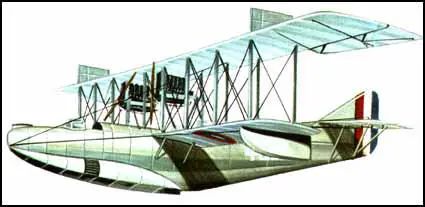Curtiss H-16
Glen Hammond Curtiss, the American aviation pioneer, began his project for a large flying boat in 1914. John Porte, a British naval pilot who was hoping to use the Curtiss H-16 to fly across the Atlantic, persuaded the Royal Naval Air Service to buy two of these aircraft. They were so impressive that 62 more were ordered.
A larger and better armed version, the Curtiss H-16, appeared in 1917. This model was armed with six machine-guns and could carry 920 lbs (416 kg) of bombs.

Performance Data of the Curtiss H-16 | |
|---|---|
Type | reconnaissance/bomber |
Engine | 2 x 400 hp Liberty |
Wing Span | 95 ft (28.98 m) |
Length | 46 ft 1 in (14.6 m) |
Height | 17 ft 8 in (5.4 m) |
Maximum Speed | 95 mph (153 kph) |
Maximum Height | 9,950 ft (3,033 m) |
Range | 378 (608 km) |
Armament | 5-6 machine-guns; 920 lbs (416 kg) of bombs |
